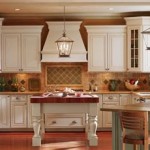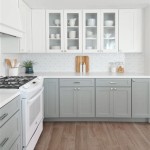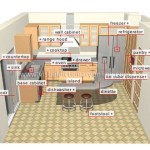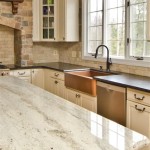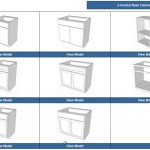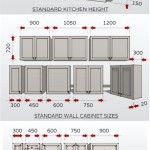How To Install Quarter Round on Kitchen Cabinets
Quarter round molding, also known as shoe molding, is a decorative trim often used to cover gaps between cabinets and walls or floors. It adds a finished touch to your kitchen cabinetry, concealing imperfections and enhancing the overall aesthetics. Installing quarter round is a relatively simple DIY project that can be completed with basic tools and a bit of patience. This article will guide you through the process, highlighting key steps and tips for achieving a professional finish.
1. Preparation is Key: Gathering Tools and Materials
Before embarking on the installation process, it is crucial to gather the necessary tools and materials. This will ensure a smooth and efficient workflow.
Tools:
- Measuring tape
- Pencil
- Saw (miter saw, handsaw, or circular saw)
- Level
- Nail gun or hammer and finish nails
- Caulk gun
- Putty knife
- Sandpaper
Materials:
- Quarter round molding
- Wood glue
- Caulk (matching the color of the molding or cabinets)
- Finish nails (matching the color of the molding)
- Primer and paint (optional, for a polished finish)
Ensure that the quarter round molding you select complements the style and color of your kitchen cabinets. Additionally, consider purchasing extra molding to account for potential cuts and mistakes.
2. Cutting and Measuring: Achieving Precision
Accurate cutting and measuring are paramount to achieve a seamless and aesthetically pleasing installation. The following steps outline the process:
- Measure and Mark: Start by measuring the length of each section where the quarter round will be installed. Mark these lengths on the molding using a pencil.
- Cutting: Utilize the saw to cut the molding at the marked points. For corners, use a miter saw to make precise 45-degree angles. If you are working with a handsaw, create a guide line and make slow, steady cuts to avoid uneven edges.
- Test Fit: Before committing to the final installation, test fit each piece of molding to ensure it fits properly and aligns with the cabinets and walls. Make any necessary adjustments if needed.
When making cuts, it's essential to consider the direction of the grain. Cutting against the grain can lead to splitting and uneven edges. Aim to cut with the grain for a smooth and clean finish.
3. Installation: Putting the Pieces Together
Once the quarter round molding is cut and measured, the installation process can begin. This involves adhering the molding to the cabinets and walls using a combination of wood glue and nails.
- Apply Wood Glue: Spread a thin layer of wood glue along the back of the quarter round molding, ensuring that the glue covers the entire surface area that will be in contact with the cabinet or wall.
- Position and Secure: Carefully position the molding against the cabinet or wall, ensuring it aligns correctly and fits snugly. Use a level to ensure that the molding is straight and even.
- Nail in Place: Once the molding is positioned correctly, secure it using finish nails. Aim for a slight angle, driving the nails at a downward angle for the most secure hold. If using a nail gun, adjust the depth to avoid puncturing the molding or the underlying surface.
- Repeat for Each Piece: Repeat the process of glue application, positioning, and nailing for each piece of quarter round molding, ensuring continuity and a unified appearance.
When nailing, aim to drive the nails at a slight angle downwards. This will help anchor the molding securely and prevent it from popping out over time. Use a nail set to countersink the nails, providing a smooth finish for later sanding and painting.
4. Finishing Touches: Refinement and Perfection
After installing the quarter round molding, it is crucial to refine the installation and achieve a professional finish. This involves caulking, sanding, and painting.
- Caulking: Apply a thin bead of caulk to any gaps or seams between the molding and the cabinet or wall. Use your finger or a putty knife to smooth out the caulk, ensuring a smooth and even finish. Allow the caulk to dry thoroughly before moving on to the next step.
- Sanding: Use sandpaper to smooth out any rough edges or imperfections on the molding. Start with a coarser grit sandpaper and gradually work your way to fine-grit sandpaper for a polished finish.
- Painting (Optional): If desired, prime and paint the quarter round molding to match the color of your kitchen cabinets or walls. Apply a primer first to help the paint adhere properly and provide a smooth finish.
Caulking helps to create a tight seal, preventing dirt and moisture from accumulating between the molding and the cabinet or wall. Additionally, sanding eliminates any rough spots, creating a smooth and aesthetically pleasing surface. Painting provides a unified finish and can enhance the overall look of your kitchen.

Day 30 Painting The Quarter Round Is Worth It Pancakes French Fries

How To Get A Custom Cabinet Look Using Trim Sincerely Marie Designs

How To Get A Custom Cabinet Look Using Trim Sincerely Marie Designs

How To Install Kitchen Cabinets And Remove Them Remodel Pt 1 Crafted Work

How To Get A Custom Cabinet Look Using Trim Sincerely Marie Designs

How To Install Quarter Round Around Kitchen Cabinets Ehow

Adding Molding To Cabinets Make Them Look Built In Young House Love

Adding Molding To Cabinets Make Them Look Built In Young House Love

Day 30 Painting The Quarter Round Is Worth It Pancakes French Fries

Kitchen Cabinets Chipped Or Baseboards Ling Here S What To Do Porch Daydreamer


